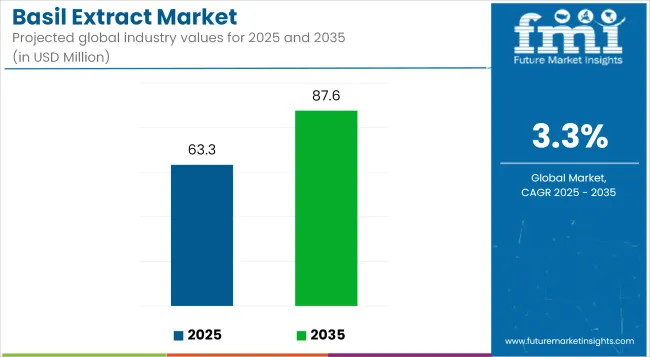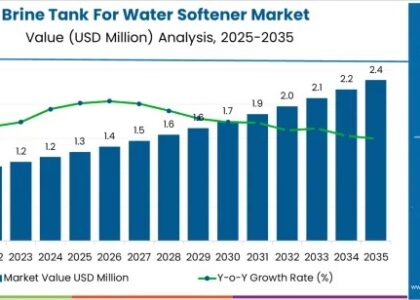
In the scramble to capitalize on plant-based health trends, basil extract has become the latest “natural miracle” to hit global markets. But behind its earthy branding and herbal promise lies a far more complicated story—one that blends tradition, science, and commerce in uneven proportions.
According to Future Market Insights, the basil extract market is projected to grow from USD 63.3 million in 2025 to USD 87.6 million by 2035, advancing at a compound annual growth rate (CAGR) of 3.3% over the forecast period (Future Market Insights).
But before we celebrate this growth as a win for natural health, we need to ask: what exactly is being sold—and to whom?
Unveil Market Trends: Get Your Sample Report Now: https://www.futuremarketinsights.com/reports/sample/rep-gb-2589
From Tradition to Trend
Basil, especially its sacred variant Ocimum sanctum (or Holy Basil), has long held a place in traditional medicine systems. Known for its calming and anti-inflammatory effects, it’s been used for generations in remedies brewed at home—not bottled in capsules or sprayed in mists.
Now, basil extract is appearing in everything from herbal teas to “anti-stress” supplements, skincare, and energy drinks. Its appeal lies in a powerful trifecta: it’s ancient, it’s natural, and it has just enough modern-sounding benefits—like being an “adaptogen”—to convince consumers it must be effective.
But there’s a growing gap between the purity of traditional use and the way it’s being commercialized.
Surge in Market Demand: Explore Comprehensive Trends and Analysis in Our Full Report: https://www.futuremarketinsights.com/reports/basil-extract-market
A Booming Market with Murky Standards
The basil extract market is undeniably growing. But growth doesn’t equal credibility.
Standardization remains inconsistent. Many products on shelves list “basil extract” without disclosing the concentration, sourcing, or processing method. And without tighter regulation or third-party testing, there’s little to guarantee efficacy or safety.
Consumers are increasingly aware of what’s in their food and supplements. But when it comes to herbal extracts, even the most health-conscious shopper is often left trusting vague promises and botanical buzzwords.
Uneven Gains, Unequal Impact
Basil is cultivated widely across Asia and parts of Africa. Yet, the value chain—from field to finished extract—often favors companies in developed economies that rebrand and retail it at enormous markups. The people who’ve grown and used basil for centuries rarely see those gains.
If this market is going to expand by nearly 40% over the next decade, the industry will need to confront not just where basil is sold, but how it’s sourced—and who actually benefits from its rise.
Final Take
The basil extract market is growing, yes. But the real question isn’t how many products will carry its name—it’s whether they’ll carry its integrity.
Without meaningful standards, ethical sourcing, or scientific transparency, the wellness industry risks turning yet another medicinal herb into a trendy label: more profitable, less potent, and disconnected from its roots.
If basil extract is to be more than marketing, it needs to be accountable—to science, to consumers, and to the communities that knew its value long before it became a global “opportunity.”
Key Industry Players
- Martin Bauer Group
- Penta Manufacturing Company
- Kefiplant
- Amoretti
- FLAVEX Naturextrakte GmbH
- M. Todd Botanical Therapeutics
- NOW Foods
- Cepham Inc.
- Todd Botanical Therapeutics
- DaXingAnLing Lingonberry Organic Foodstuffs Co., Ltd.
 Explore Functional Food Ingredients Industry Analysis: https://www.futuremarketinsights.com/industry-analysis/functional-food-ingredients
Explore Functional Food Ingredients Industry Analysis: https://www.futuremarketinsights.com/industry-analysis/functional-food-ingredients
Segmentation
By Application:
By application, the industry is segmented into pharmaceutical and personal care products.
By Type:
The industry includes powder, capsule, and oil.
By Region:
The industry spans North America, Europe, Asia Pacific, the Middle East & Africa, and Latin America.





